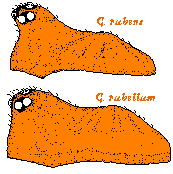
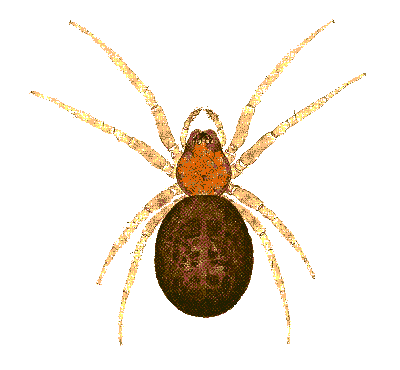
At 2.5 to 3.5 mm, these two species are about the same size last month's species. As their names suggest, G. rubens and G. rubellum are both reddish in colour and, indeed, they look similar.
I like these spiders - they look so good with their rich red colour,
with paler legs and overall robust appearance.

If one looks closely there are differences to be seen.
Thus their heads differ in shape, at least in the males, as shown
here.
They also have differently shaped legs - the tibia of the first leg
varies between the species, as you can see here.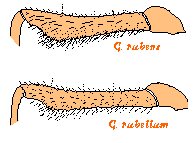
You might be forgiven for thinking that they are easily confused, but one gets a good indication of their identity from the habitat in which they are found. Both of these species are common and widespread in Britain, but G. rubellum tends to occur in wooded locations whereas G. rubens is a species of more open habitats. Most of my sampling has concentrated on ground layer fauna sampled by means of pitfall traps and, at this time of year, I have captured large numbers of G. rubellum in the oak woodland of Inchailloch at Loch Lomond and equally numerous G. rubens in the short vegetation of the raised peat-bogs at locations such as Silver Flowe in Galloway.
Of course, prediction of identity by habitat is not so perfect - there are always exceptions and the occasional G. rubellum or rubens is found amongst many of their congeners, so it doesn't do to be complacent.
But arachnologist's don't rely on overall appearance - we usually examine
the genitalia to determine species.
Male spiders have specially adapted palps which they use to transfer
seminal fluid into the female's genital opening. 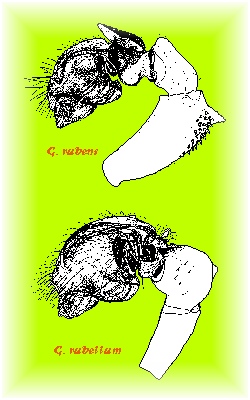
The epigyne is the term used for the genital opening of the female
spider and it has a specific structure suited to the structure of the male
palps.
.
So, this is particularly true in Gonatium - as you can see in this picture (on the right), their male palps are complicated structures and have a very characteristic appearance. It's very easy to distinguish between them on this basis.
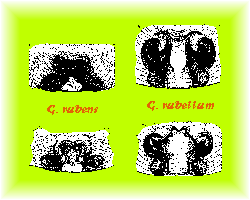
While their male palps tend to be very species-characteristic, both
G.
rubellum and rubens show much more variation in the appearance
of the female epigynes. The illustrations here (rubens on the left,
rubellum
on the right) show extreme forms for both species - but, even so, as you
can see, the species are quite distinctive.
Thus there is a sort of "lock and key" fit of the male's palps into
the female's epigyne, which ensures that only conspecifics can mate successfully.
Together with the sometimes complex courtship behaviour exhibited by these
fascinating animals (so that she accepts his amorous advances instead of
eating him as prey - since they are well-adapted carnivorous predators
after all), the specialised structures of the palps and epigynes contribute
to species separation mechanisms and thus is part of the basis for the
species-rich spider communities that we find in many habitats where we
might expect fewer species
The picture of G. rubens is again from the book by Dr. Mike Roberts
: The Spiders of Great Britain and Ireland, published by Harley
Books in 1985, from which the other illustrations have been highly adapted.
| Return to..? | |
 Ariadne Home Page
Ariadne Home Page |
|